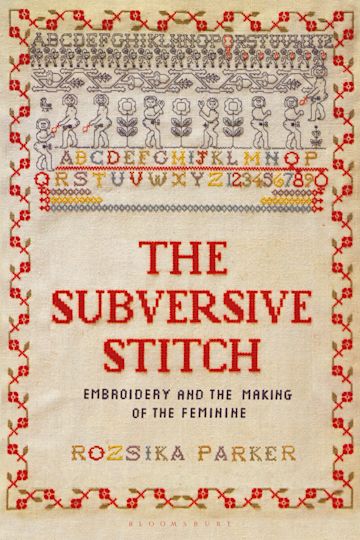Book Review: The Subversive Stitch: Embroidery and the Making of the Feminine
 Book Review: The Subversive Stitch: Embroidery and the Making of the Feminine, by Rozsika Parker
Book Review: The Subversive Stitch: Embroidery and the Making of the Feminine, by Rozsika Parker
Reviewed by Tasha Nuthall
“To know the history of embroidery is to know the history of women.”
My knowledge of embroidery is scant to say the least. My sewing abilities are ‘fine’; I can just about manage a running stitch for a quick repair of a torn sleeve or worn hem. The Great British Sewing Bee was my go-to for evening entertainment during the first lockdown. However, I must admit that the history of embroidery had never crossed my mind, much less its relationship with femininity.
That is, until I read Rozsika Parker’s The Subversive Stitch: Embroidery and the Making of the Feminine. Written in 1984, The Subversive Stitch chronicles the way in which embroidery, initially a craft honed by both sexes, became commandeered as a tool used to construct femininity. Examining a vast period of embroidered artworks from the Bayeux Tapestry to Judy Chicago’s The Dinner Party, Parker seeks to disrupt the notion of embroidery as a purely decorative art, instead illuminating not only its significance in the art world, but also its influence on female behaviour.
Divided into eight chapters, The Subversive Stitch demonstrates how the art of embroidery was both a creative pursuit and a tool of oppression, and Parker examines class structures and religious influence to fuel her argument. I found her essay on the manipulation of ecclesial imagery to rupture the bond between midwives and mothers particularly fascinating.
While this book is an excellent introduction to the history of textiles, I found the Eurocentric content a little tiring. It would have been interesting to see Parker’s take on the cultural significance of textiles designs found in many countries in Africa, for example. Moreover, Chinese embroidery designs were only briefly mentioned in the latter half of the text, and only in relation to the ways in which European artists incorporated these styles into their works.
Ultimately, The Subversive Stitch is a detailed and expressive piece of academic writing that successfully shines a light on the oft-overlooked embroidery arts. It offers a well-examined view of European art history and femininity and is the perfect springboard for exploring the world of textiles.
